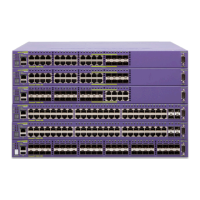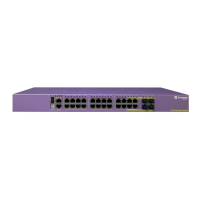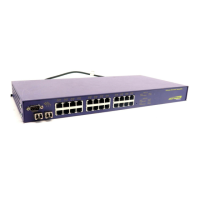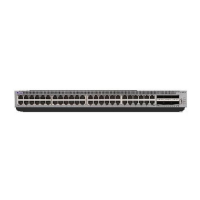Switch Port-Mirroring
Summit 200 Series Switch Installation and User Guide 83
Up to eight mirroring filters and one monitor port can be configured. Once a port is specified as a
monitor port, it cannot be used for any other function.
NOTE
Frames that contain errors are not mirrored.
The mirrored port always transmits tagged frames. The default port tag will be added to any untagged
packets as they are mirrored. This allows you to mirror multiple ports or VLANs to a mirror port, while
preserving the ability of a single protocol analyzer to track and differentiate traffic within a broadcast
domain (VLAN) and across broadcast domains (for example, across VLANs when routing).
NOTE
For optimum performance, mirror three or fewer ports at any given time.
On the Summit 200-48 switch, all ports specified by mirror filters as well as the mirror output port must
belong to the same port group. Port group 1 consists of ports 1 through 24 and port 49; port group 2
consists of ports 25 through 48 and port 50.
Port-Mirroring Commands
Switch port-mirroring commands are described in Table 26.
Port-Mirroring Example
The following example selects port 3 as the mirror port and sends all traffic coming into or out of the
switch on port 1 to the mirror port:
enable mirroring to port 3 tagged
config mirroring add port 1
Table 26: Switch Port-Mirroring Configuration Commands
Command Description
config mirroring add ports <portlist> Adds a single mirroring filter definition. Up to
eight mirroring definitions can be added.
config mirroring delete ports <portlist> Deletes a particular mirroring filter definition.
disable mirroring Disables port-mirroring.
enable mirroring to <port> tagged Dedicates a port to be the mirror output port.
show mirroring Displays the port-mirroring configuration.
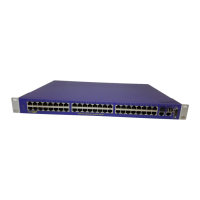
